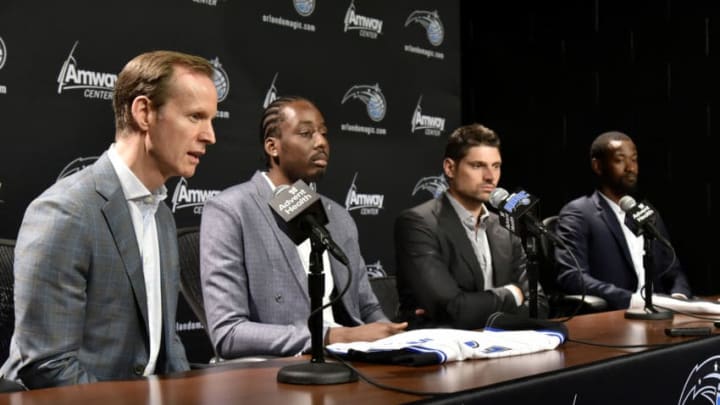The NBA has a rightful obsession with 3-and-D wings. With their roster now complete, do the Orlando Magic have too many players with this skill set?
The Orlando Magic‘s roster is finally complete after the team signed DaQuan Jeffries and Vic Law to Exhibit-10 contracts last week. Both players offer defensive versatility and average shooting from deep with each having some ability to create off the dribble when a defense breaks down.
They are what the NBA calls: 3-and-D wings.
This archetype of player has been growing in importance as the NBA continues to shift into more switch-heavy defenses and continues to see an increase in 3-point attempts to maximize scoring and spacing.
These players have simple roles: Be able to defend and hold your own against wings and guards on defense and take 3-pointers when open on offense.
It sounds like a simple role to fill, but it is still difficult to find these types of valuable role players.
Some players are great defenders, but struggle to knock down consistent open looks and are left alone offensively, allowing opponents to sag off and help on drives.
Others may be sharpshooters but do not have the defensive prowess needed. Ball handlers hunt these players, seeking them out on screens to exploit them on switches.
The Magic have a solid amount of players who fit the 3-and-D skill set. It will be interesting to see how they divide their playtime.
Jonathan Isaac, Al-Farouq Aminu, Wesley Iwundu, Chuma Okeke (if he ever signs with the team this year), Melvin Frazier and the previously mentioned DaQuan Jeffries and Vic Law are all in the 3-and-D mold. they take almost half of their shots beyond the 3-point line while being long, athletic defenders.
Yes, most of these players are young and will grow as players over time. But they are currently asked to perform the 3-and-D job.
For example, Jonathan Isaac is 21 years old and has the potential to develop into much more than a 3-and-D player.
But for now, the Magic ask him to spread the floor and hit open 3-pointers. Many of his field-goal attempts came from beyond the arc — 3.5 of his 8.1 field goals per game came from the 3-point line, in fact. Isaac made only 32.3 percent of his 3-pointers last year. He is not asked to do much offensively while wreaking havoc on the defensive end.
To be sure, this is an important part of Isaac’s development.
It is nice to have players who are strong defensively and can shoot while not taking the ball out of the main playmakers’ hands offensively. But none of these players have proven to be average shooters from deep in the NBA.
Chuma Okeke, DaQuan Jeffries and Vic Law have not logged a second in the NBA yet. But only one of the other players shot better than 36.0 percent from deep last season. And that was Wesley Iwundu who only averaged 1.2 3-point attempts per game. Defenses were not afraid to leave Iwundu open.
Okeke, Jeffries and Law were all solid shooters from deep with each taking more than 3.7 3-point attempts per game during their last seasons in college. But none of them seem likely to feature heavily, if at all, in Orlando’s rotation this upcoming season.
Shooting is at a premium throughout the league, and the Magic will need these 3-and-D young players, and Al-Farouq Aminu (34.3 percent 3-point shooting last year), to take a step forward in their shooting percentages from deep for the Magic to improve as a team.
They added five new players to the mix this summer, and all but one of them fall into the 3-and-D mold. The team is loaded with players who serve this role.
Perhaps the Magic could have used these resources to address their two biggest roster question marks — playmaking and shooting. Instead, they will have roughly the same rotation as last season and are content with the chemistry of last season’s team that made the postseason.
With upwards of seven 3-and-D players on the books, it is doubtful most of them will be contributors this season, which portrays a team that may have too many wings on their roster.
It has been clear for years this front office covets long, athletic wings. And this roster is no different. It is why there seem to be too many 3-and-D wings on the roster to give minutes to.
